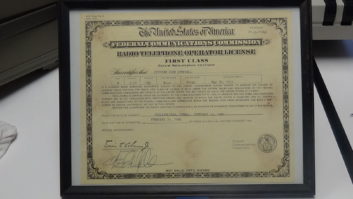
Fig. 1: The open DSL filter case Steven Donnell is with New Hampshire Public Radio and is based in Concord, N.H. He offers a simple project that he put together to help diagnose problems with a pair of phone lines at a remote transmitter site. It provides an easy way to look at the voltage (and current) on a telephone line using a typical multimeter.
Steven took a typical DSL filter, shown in Fig. 1, and cracked the plastic box open using a vise. Then he stripped the capacitors and inductors off of the PC board inside, so that all that was left was the female RJ-11 jack and a short pigtail leading to a male RJ-11 (see Fig. 2). He installed four short jumper wires to connect between the corresponding Red, Green, Yellow and Black wires between the male/female RJ-11 connectors. As you can see in the schematic drawing (Fig. 3), Steven included another lead out to a terminal strip that he attached to the side of the plastic case.

Fig. 2: The stripped circuit board One further step was the addition of a small slide switch to provide a means to open the Red lead. Be sure to include an extra lead from the “switched” side, out to the terminal strip. This adds the ability to “open” the line, in order to look at On/Off Hook line current.
Steven’s finished product is seen in Fig. 4.
He also shares a great resource for tools, test equipment and technical information. Head to Mike Sandman’s website. Mike is in Chicago and his site is www.sandman.com. Mike has a data sheet that shows what you should expect for voltage and current readings on a phone line (www.sandman.com/files/teldiagchart.pdf).

Fig. 3: The simplified test fixture schematic
Steven, thanks for sharing a simple yet effective test fixture with our readers.
* * *
Engineering consultant Thomas Osenkowsky writes of an experience that may serve as a helpful reminder to others. Like many broadcast problems, this started with frustration but eventually resolved with satisfaction.
Tom had a propane generator in an outdoor cabinet. One day the generator failed to exercise; but when he moved the control panel switch to Manual, it started and ran fine.
He noticed that the “Auto” status light was not lit. However, when he toggled the switch back into “Auto” it was lit.
After replacing the DPDT switch, Tom performed an autopsy. Inside, he found a substance contaminating one set of switch contacts. He thought this strange because the transmitter site is in a residential area, with no industry or bodies of water nearby that could contaminate the switch contacts.

Fig. 4: The finished telco current/voltage test fixture
About a year later, the generator was running but not producing voltage. The culprit was a bad relay. Opening it up, again he found the contacts contaminated.
During one weekly inspection, Tom found the RF output Fwd power meter on the Harris MX-15 exciter pinned. Turning the AGC off, he returned it to the normal 8W output. But it turned out that one pole of the DPDT AGC switch was intermittently open. Opening the switch again revealed contaminated contacts.
Two years later, he was looking for spare parts, which were stored on a set of metal shelves behind the FM transmitters. Tom noticed a layer of rust colored residue on the shelf below the one he was searching. Tom found a can of wasp spray had exploded and then ate through the shelf.
That residue had a familiar appearance. Directly above the shelf was an exhaust fan, and directly in back of the shelf was the air intake to the FM transmitter with the MX-15 exciter. Right outside the exhaust fan is the generator.
That wasp spray turned out to be the source of the contamination on both the relay and the two switches.
Tom now makes sure to check the shelves of any new contract stations. You never know what you will find.
I once visited a contract station that kept a glass container of battery acid on a rickety shelf. That stuff is nasty, and I could never understand why it was there — no generator or acid cell batteries were in use.
I discovered it when it fell off the shelf and splattered all over my shoes and jeans, eating holes in them. I was fortunate that my associate was there with me and that he lived nearby. He grabbed some cleaning supplies and a first aid kit from home. This is another example of why you don’t want to visit remote transmitter sites by yourself!
Contribute to Workbench. You’ll help your fellow engineers, and qualify for SBE recertification credit. Send Workbench tips to [email protected]. Fax to (603) 472-4944.
Author John Bisset has spent 45 years in the broadcasting industry and is still learning. He handles West Coast sales for the Telos Alliance. He is SBE certified and is a past recipient of the SBE’s Educator of the Year Award.











